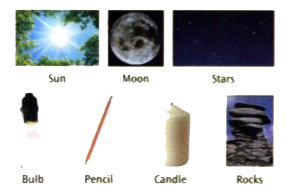A circular area of radius 1.0 cm is placed at a distance of 2.0 m from a poit source.Teh source emits light uniformluy in al directions. The line joining the sorce to the dcentre of the area is normal to the area. It ils found that lumen of luminous flux is incident on the area. Calculate the total luminous flux emitted by the soure and teh luminous intensity of the source along the axis of the area.
To solve the problem step by step, we will follow the instructions given in the video transcript and break down the calculations clearly.
Step 1: Understand the Problem
We have a point source of light emitting uniformly in all directions. A circular area of radius 1.0 cm is placed 2.0 m away from the source. The luminous flux incident on this area is given as 2.0×10−3 lumens.
Step 2: Convert Units
Convert the radius of the circular area from centimeters to meters:
r=1.0cm=0.01m
Step 3: Calculate the Area of the Circular Disk
The area A of the circular disk can be calculated using the formula:
A=πr2=π(0.01)2=π×0.0001≈3.14×10−4m2
Step 4: Calculate the Solid Angle
The solid angle Δω subtended by the circular area at the point source is given by:
Δω=AR2
where R is the distance from the source to the center of the area (2.0 m). Thus:
Δω=3.14×10−4(2.0)2=3.14×10−44=7.85×10−5steradians
Step 5: Calculate Total Luminous Flux
The luminous flux F incident on the area is given as 2.0×10−3 lumens. The total luminous flux Φ emitted by the source can be calculated using the relationship:
Φ=F⋅4πΔω
Substituting the values:
Φ=2.0×10−3⋅4π7.85×10−5≈2.0×10−3⋅16000≈32lumen
Step 6: Calculate Luminous Intensity
The luminous intensity I of the source along the axis of the area is given by:
I=FΔω
Substituting the values:
I=2.0×10−37.85×10−5≈25.4lumen per steradian
Final Answers
- Total luminous flux emitted by the source: 32 lumen
- Luminous intensity of the source along the axis of the area: 25.4 lumen per steradian
We have a point source of light emitting uniformly in all directions. A circular area of radius 1.0 cm is placed 2.0 m away from the source. The luminous flux incident on this area is given as 2.0×10−3 lumens.
Convert the radius of the circular area from centimeters to meters:
r=1.0cm=0.01m
The area A of the circular disk can be calculated using the formula:
A=πr2=π(0.01)2=π×0.0001≈3.14×10−4m2
The solid angle Δω subtended by the circular area at the point source is given by:
Δω=AR2
where R is the distance from the source to the center of the area (2.0 m). Thus:
Δω=3.14×10−4(2.0)2=3.14×10−44=7.85×10−5steradians
The luminous flux F incident on the area is given as 2.0×10−3 lumens. The total luminous flux Φ emitted by the source can be calculated using the relationship:
Φ=F⋅4πΔω
Substituting the values:
Φ=2.0×10−3⋅4π7.85×10−5≈2.0×10−3⋅16000≈32lumen
The luminous intensity I of the source along the axis of the area is given by:
I=FΔω
Substituting the values:
I=2.0×10−37.85×10−5≈25.4lumen per steradian
- Total luminous flux emitted by the source: 32 lumen
- Luminous intensity of the source along the axis of the area: 25.4 lumen per steradian
Topper's Solved these Questions
- PHOTO ELECTRIC EFFECT AND WAVE PARTICLE DUALITYBook:HC VERMA ENGLISHChapter:PHOTO ELECTRIC EFFECT AND WAVE PARTICLE DUALITYExercise:question for short answer
Explore 13 Videos
- SEMICONDUCTOR AND SEMICONDUCTOR DEVICESBook:HC VERMA ENGLISHChapter:SEMICONDUCTOR AND SEMICONDUCTOR DEVICESExercise:Question for short answer
Explore 11 Videos
Similar Questions
Dimensions of luminous flux are
View SolutionWrite the SI unit of luminous intensity and the amount of substance.
View SolutionWrite the SI unit of luminous intensity and the amount of substance.
View SolutionWhat is the luminous flux of a source emitting radio waves ?
View SolutionA circular plate of area 0.4cm2 is kept at distance of 2m source of power πW. Find the amount of energy received by plate in 5 secs.
View Solution
How can a non-luminous metal such as iron be made luminous?
View SolutionA source emits 31.4 W of radiant flux distributed uniformly in all directions. The luminous efficiency is 60 lumen watt. What is the luminous intensity of the source ?
View SolutionA point source emitting uniformly in all directions is placed above a table top at a distance of 0.50 m from it. The luminous flux of the source is 1570 lumen. Find the illuminance at a small surface area of the table to a.directly below the source and b. at as distance of 0.80 m from the source.
View SolutionA point source is emitting sound in all directions. The ratio of distance of two points from the point source where the difference in loudness levels is 3 dB is: (log102=0.3).
View SolutionA point source is emitting sound in all directions. The ratio of distance of two points from the point source where the difference in loudness levels is 3 dB is: (log102=0.3).
View Solution